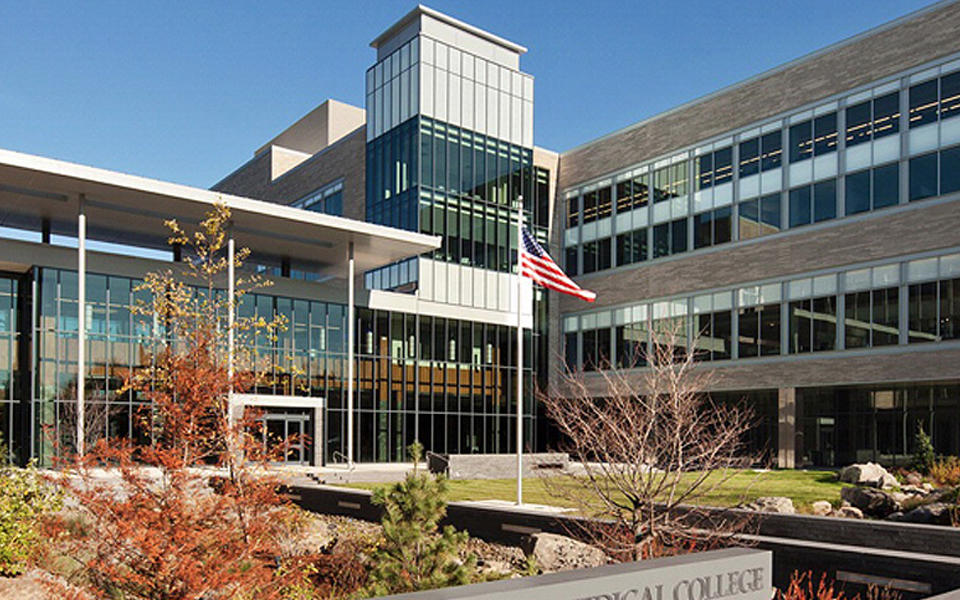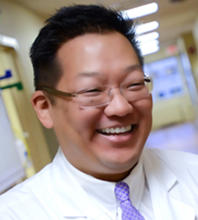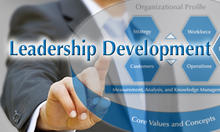Blogrige
The Official Baldrige Blog

With the help of peer feedback, face-to-face knowledge sharing, and coaching, Baldrige Executive Fellows work on a capstone leadership project to drive strategic results improvement for their own organizations. To do this, they develop a project to innovate or improve something of strategic significance using Baldrige concepts and what they learn from the best practices of Baldrige Award recipients they visit during their year-long fellowships. They also have a network of other Fellows with whom they can test ideas and innovations and receive feedback. The Fellows’ capstone projects are intended to yield significant, systemic impact in their own organizations.

MBA, FACS
Baldrige Executive Fellow, 2016
In the following interview, I sought more detail on his capstone project, his experience with the Baldrige Executive Fellows, and the results that the Musculoskeletal Institute at Geisinger Health System has achieved.
Please tell me about your capstone project.
When I entered into the Baldrige Executive Fellows Program, the concept of creating clinical institutes was a fledging thought at Geisinger. I wanted to consolidate a number of different clinical service lines that were related either by disease or anatomic location around this idea to find ways to work better together.
I designed my capstone project around trying to establish a Musculoskeletal Institute by using the tools around performance excellence to really set the foundation for going forward. The Musculoskeletal Institute was among the first to take a step in that direction.
Geisinger, like many institutions, is a full-service, large, integrated health system, and prior to this capstone project, it had 29 departments that were sometimes working in concert but oftentimes working against purposes or in silos that needed to be broken down. So, I wanted to use the Baldrige framework to learn more about trying to create unified, integrated processes of thought and action. I applied to be a Baldrige Fellow with the support of the system to bring some of that learning back.
What was the desired goal of your capstone project? What results have you seen?
For me, the desired goal was to understand the Baldrige framework, accepting that real development through the phases of performance excellence would take several years. The desire after the fellowship was to lay the blueprint for what was to follow. Now that it has been three years since I’ve been a Fellow, I can tell you that we’re well on our way to having achieved many of the goals that we set out, including overall financial performance in double-digit growth, and employee satisfaction rated at the highest, top-decile in the country for physician engagement. We have a sense of integration, vision, and purpose among different service lines—orthopedics, physical therapy, physical medicine, rehabilitation, podiatry, and wound care—that really has never been seen before.
I attribute these results, first, to institutional endorsement of the idea that we could consolidate clinical service lines but more importantly to having a framework for my leadership, and for that I adapted the Baldrige framework. The folks who report to me, including the clinicians, stay true to the vision and mission while at the same time feel really engaged as we go through some challenges and process improvements to make our care delivery better.
One of the most valuable tools from the fellowship was really understanding that the Baldrige framework is adaptable to any situation, and that the tools within the framework are not necessarily a means to an end. For example, learning Six Sigma, Lean, and other tools doesn’t necessarily make you better. It is that these tools are applied within the pillars of the Baldrige framework that keeps us focused to try and achieve excellence in each one.
What was your impression of Baldrige when you started the fellowship?
When I first started in the Baldrige Program, honestly, I was a little bit lost. I didn’t quite understand. I had an expectation that I was going to be spoon-fed some solutions to my problem. To me, there is an analogy from orthopedic surgery. My faculty as a surgeon is based on understanding the principles that can be applied to almost any condition because the behavior of bone does not vary. The analogy in Baldrige is that there’s no one way to do everything.
I remember trying to look at other capstone projects and other Baldrige winners’ processes, and trying to pull out a pearl that would make me successful. In fact, the reason why the Baldrige Program publishes award application summaries is that they are all different. It’s inspirational to see these tremendous winners who have applied a set of principles and a high degree of focus to achieving those principles and finding success.
What are the future milestones of your project (i.e., what do you hope will happen next)?
We are at phase 2 going into phase 3 of our Baldrige progress. We are getting to the point at the Musculoskeletal Institute where we play less defense and are less reactive to issues; instead, we are really looking to be the innovator and role model. We’re going to continue, to create uniformity, to become role model. My goal has always been to be the number one in the world when it comes to delivery of musculoskeletal care. That may be elusive, but I would love to see us get there. And we continue every day to march toward that goal.
For you, what was the value in completing the Baldrige Executive Fellows Program?
The fellowship program is really about that; it’s about fellowship. My classmates—from all walks of life, in different stages in career and different industries—are continuously in good contact. I found that the interaction and peer development during the program was probably one of the most valuable things.
I think that the Baldrige Executive Fellows coaches—Harry Hertz, Robert Barnett, Robert Fangmeyer—have oversight into our process and offer a gentle nudge or probe the right questions and ask the right things. Going from an ideal to actual execution and helping us stay in that direction, that mentorship is invaluable. I would dare to say most institutions don’t have those institutional mentors.
There are lots of people who are leaders by title. I found that the three of them were extraordinarily engaged with the altruistic purpose of just trying to make sure that we become better at what we do. I love that part. Understanding the framework is really about absorbing principles and finding different applications for those principles. I will tell you that the program helped me far beyond my role as an institutional clinician leader; now I look at where there’s failure, there’s opportunity.
My sense is that people in health care in general are crazy interested in performance excellence. My commentary is that there are important critical tools, but you need to have the bigger picture to drive systematic performance excellence to be successful. Bob Barnett [Baldrige Fellows’ “executive-in-residence”] asks three critical questions:
- Are you any good?
- Are you getting better?
- How do you know?
I now use these questions everywhere I go and credit Bob. These are the three most important questions I ask when thinking about performance excellence.
Suk recently was a coauthor for the Harvard Business Review article “Three Ways to Make Electronic Health Records Less Time-Consuming for Physicians.”
Join a Community of Visionary Leaders

Become a Baldrige Executive Fellow
The Baldrige Executive Fellows Program is a hands-on leadership development program that will propel your organization to higher levels of performance. Learn from a cohort of senior decision makers and Baldrige Award recipients and emerge with a broader perspective on how to achieve performance excellence for your organization, stimulate innovation, and build the knowledge and capabilities necessary for organizational sustainability.
What Executive Fellows Are Saying | Apply Today (2020–2021 cohort)





